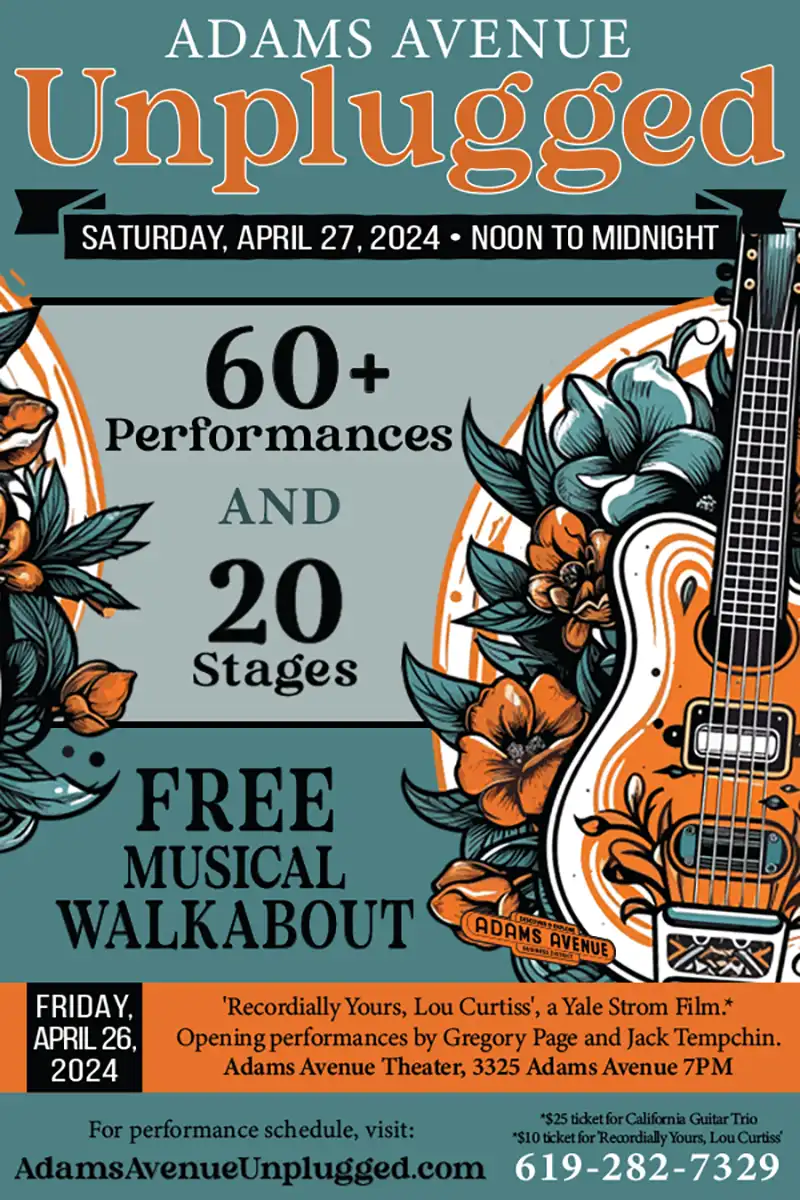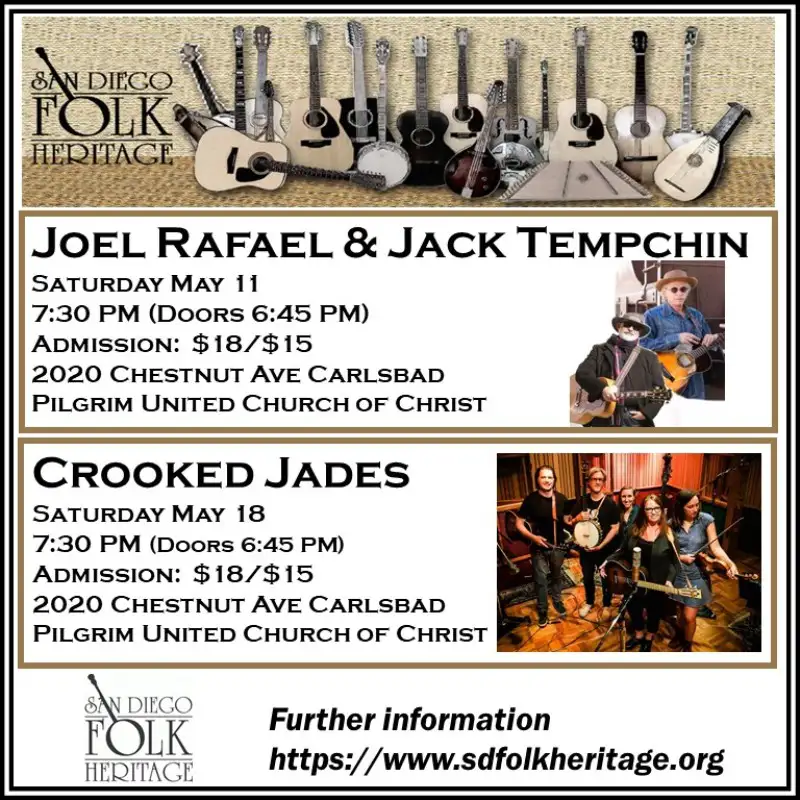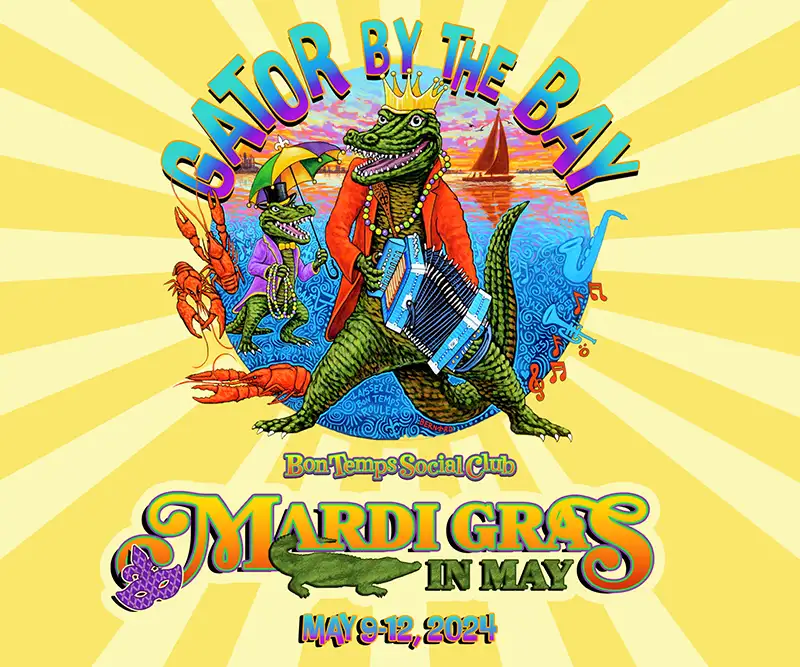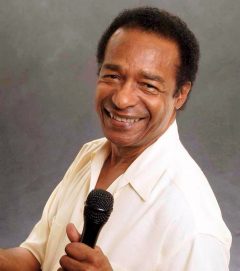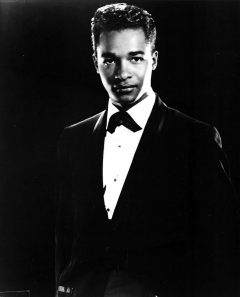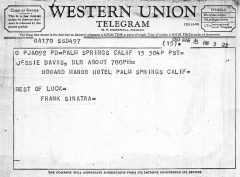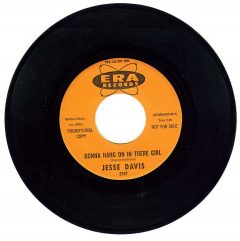Yesterday And Today
Jesse Davis: Still Singin’ and Swingin’ After All These Years
One of the true legends of San Diego’s music community, Jesse Davis has had an amazing life in music. A sophisticated vocalist and showman he has been a staple of San Diego’s clubs and lounges since he arrived in 1970. His career has seen him release dozens of recordings, most recently the album It’s About Love with singer Darci Daniels (2010), but also a series of highly collectable soul 7-inch singles, issued during the mid 1960s. He’s also interacted with the likes of Frank Sinatra, worked with canine film star “Benji,” and entertained hundreds of thousands of people in the process.
Early Days
Davis was born in the South and “lived my early years with my Godparents…a minister and his wife. Then my family moved to Lansing, Michigan around the time I was nine years old,” he recalled. Music was a big part of Davis life from the beginning.” I played drums, but never got serious about it,” he said. “Voice was always my instrument. I started singing in the choir at an early age and then in school choirs,” he continued. Davis can still recall the moment he decided music would be his life’s choice. “I didn’t think about being a professional singer until I went to see (R&B singer) Larry Darnell in concert. When he sang his ballad, “For You My Love,” (#1 R&B, 1949), I saw the audience, the girls in particular being very moved by it, some even crying. I thought to myself at that time that I wanted to do that! So, that Larry Darnell show was my original insight into singing professionally because of the reaction he received, but my real inspirations were Nat King Cole and Billy Eckstein.” Davis’ first performance would be at the age of 15, singing the Tony Bennett version of “Blue Velvet” (#16, 1951). “I received a really great reaction, which fueled my desire to keep pursuing music,” he said.
Early on he performed with the Doug Cook Combo and worked with a touring show band called The Fabulous Tones. “We toured through many States aside from California, like South Dakota, Wyoming, Oklahoma, Texas, and Nevada (Las Vegas).” He also did brief stint in The Ink Spots on tour. “As a favor for a while, but I was working on my solo career as well.”
Las Vegas
Davis sang in a variety of venues, but in 1967 he had a chance to audition for Las Vegas. “I had been performing at a large Supper Club Palm Springs called the Howard Manor,” he recalled. “A strangely dressed guy had wandered in during an afternoon rehearsal and told me, “I’m going to tell Jack about you.” I had no idea who he was talking about and mentally dismissed the comment. A week or so later, that same guy came back in to hear my show and, during a break, called me over to a wall phone and said “Here, talk to Jack.” It turned out to be Jack Entratter, the GM of the Sands Hotel and Casino. He was labeled as an owner, but I found out later that he was the GM… a powerful one.” Entratter scheduled an audition for Davis. “When I arrived I thought I would be auditioning for the manager of the Lounge. I found out maybe 15 minutes ahead of time that I would be auditioning in the huge Copa Room (Sinatra’s room), not only for Jack Entratter but also for Sinatra himself and Dean Martin’s wife! To say I was nervous doesn’t even go there… especially when I found out that they had forgotten to set up a microphone for me! But I forged ahead, thinking I had no shot of getting a gig under these circumstances and did a couple of songs. Sinatra then said to Jack (loud enough for me to hear him)… “What are you trying to do, burn the kid’s voice out? Give him a job! A Wow moment for me for sure,” Davis said, good naturedly. The audition led to many engagements at various casinos in Las Vegas, Reno, and Lake Tahoe. “Sinatra sent me a congratulations telegram on my opening night and also came in to see me on another night,” Davis said.
Sadly, Davis stopped performing in Las Vegas during the 1990s. “Vegas was fabulous during the late ’60s, ’70s, and ’80s. The places were glamorous, everyone dressed up, and people came for all the great entertainment. I stopped performing there in around 1990, right after the Musician’s Union was broken. That resulted in the hotels not using the big bands for production shows in addition to lowering the pay scale for entertainers to the point it did not make financial sense to go there.”
Arriving in San Diego
Davis notes that music was at a crossroads during the mid-1960s. “In the ’60s the music was expanding because you still had the songs from Sinatra, Sammy Davis Jr., Tony Bennett, Ella Fitzgerald, and so many more that were still popular, but there was also the Beatles, Rolling Stones, Motown artists, and on and on that were dominating, too. It was an exciting time musically.”
During this time frame he worked clubs in L.A., Palm Springs, and San Diego when the opportunity to relocate appeared. “I had been living in L.A. and working at various clubs there. One of those clubs was the Melody Room and one night a lady, wearing a full-length mink coat, came in with two men. And she came up to me and said “Jesse, honey, I brought these two club owners from San Diego in to see you, so I want you to sing your ass off.” That led me to my first gig in San Diego at a brand new club called Shifty’s, modeled exactly after Sneaky Pete’s in Hollywood, which those two guys were opening. That led to gigs at the Hotel Del Coronado… and ultimately to my decision to move here. I was approximately 30 years old at the time and was singing songs popular at the time from those singers that were my inspiration.” Though he played many gigs, they were almost all solo with band performances. “I rarely worked clubs that had more than one performer at a time. Shifty’s was the exception as they had the lounge, which I was in, and showrooms with a headliner act like Sergio Mendes and Julie London. I did open for Phyllis Diller once–an odd pairing, right? And I substituted for Johnny Mathis on his opening night at a showroom in Palm Springs.” The latter is a well-deserved point of pride for Davis. “Johnny Mathis had to cancel a show, so I performed to a crowd that wasn’t told he would not be there until the first act was finished.. I ended up getting a standing ovation from them. That was a moment.”
Northern Soul
Davis is an acclaimed performer in Southern California, known for his terrific take on standards, but his worldwide rep is built on a series of R&B/soul 45s that he released during the mid 1960s. While none were a hit at the time, fast forward a few decades and they have become genre icons, with original copies of such singles as 1967’s “Gonna Hang on in There Girl” (Era 3189) routinely trading for over $1,000. His first album, Moving Along, was issued the same year in Australia, where he did some touring. He notes there are no outtakes from any of his releases, save for some modern-day live recordings, though tantalizingly, there are vintage demos and an early unreleased session for the song, “Do You Love Me.”
Davis current resurgence can be traced to the late 1990s and the British Northern Soul scene, built around dance floor-filling rare singles. To date, Davis’ music has been included on seven different soul music compilations in England. “Gonna Hang on in There” first showed up on the 1997 compilation For Millionaire’s Only, Vol. 3 (Goldmine Soul Supply) and continues to be reissued, as recently as 2013, on the album, Era Records Northern Soul (Kent). A 7-inch version was reissued in 2010, also on Kent.
“That happened so randomly,” Davis mused of the renewed interest in the tracks. “I was working at a club called Villani’s in Mission Valley, inside what was then the International Hotel. A great spot. My wife and I arrived at the club and we saw a young couple standing just inside the entrance and they seemed very nervous. They came rushing up to us and asked if I was Jesse Davis, as they had seen my name on the hotel marquee. They then started talking so fast we could not understand them as they had very heavy Cockney accents. Finally, I realized they were asking me about “Gonna Hang on in There Girl.” I could not believe this couple, who probably weren’t born when that song was recorded, could even knew about it. It was never released outside the U.S. They proceeded to tell me it was a collector’s item in the U.K. This was in the late ’90s and the Internet was not what it is today. My wife tried to find info on it to no avail, until several years later, and one thing led to another in making contacts in England.”
Fans were also thrilled in 2014 by the release of the DVD Australian Bandstand with Cilla Black and the Shadows, which included two songs taped for the television program during Davis’ 1968 visit down under: “Our Day Will Come” and “Something to Think About.”
TV and Benji
Over the years Davis has made many regional media appearances, including the Regis Philbin Show in L.A. and Sun Up San Diego. Meanwhile in Mexico City, he performed on the program Siempre en Domingo, and also did some interviews in Acapulco. In Australia, in addition to Bandstand, he appeared on that country’s equivalent of Hollywood Squares. In 1976 he had a bit part in the Western comedy, Hawmps. Notably, he was also featured in the TV specials featuring the beloved canine star Benji: The Phenomenon of Benji (1978), which was filmed throughout Europe and finished with a live show at the Grand Ole Opry in Nashville, and Benji at Marineland (1981). He also released several Benji-related recordings, including “Benji’s Theme / I Feel Love” (1975).
“I was working at the Paraiso Marriott in Acapulco when I was approached one night by a customer who asked if I would mind being produced by someone else. I said no, I didn’t and he gave me a card and told me to call him when I got back to the States. I honestly didn’t think anything of it… you get a lot of people who claim they can do this or that for you… and I did not know the name.” As fate would have it, the gentleman was producer Joe Camp, who had directed 1974’s #10 box office hit film, Benji. “Before I ever got back to California, I received a package from him at the hotel in Acapulco, and it was the music to “I Feel Love.” The song had been recorded by Charlie Rich for the movie, but Rich did not want his version to be released as a single. “So Joe Camp offered it to me. That led to my appearances in the aforementioned Benji projects as well as an appearance in Hawmps.
Modern Days
Over the past decade, Davis’ profile has continued to rise. In 2008, a special concert honoring Davis’ first 50 years in show business was held at Anthology (now the Music Box). “It was a tribute show that my wife produced as a surprise to me,” he remembered. Unfortunately, something that big proved to be difficult to keep a secret. “Benny Hollman (big band leader and Frankie Laine’s music conductor) called up to congratulate me and I didn’t know what he was talking about!” Davis laughed. “My wife passed it off as him getting me confused with a sax player by the same name who has had a number of records. But she knew that she had to let the cat out of the bag, so took me to Anthology the next day for happy hour. They had an electronic sign over the bar that showed the coming attractions and had me look up when my name came up… that was how she surprised me with the upcoming show!” The sold-out show was set to be filmed, but alas things didn’t go as planned. “Sadly, although my wife had engaged services to film the show, they only filmed the first half–something happened and we still don’t know what. And, of course, she had the show arranged so it would build, so the best part was the second half, which never got recorded. They were very apologetic but it was a huge disappointment,” he said.
Meanwhile, in 2010, Davis performed in England for the first time. “Over the years since learning about the fact that a few of my records were collector’s items among the Northern Soul devotees, Diane kept in touch with various people in that music scene,” Davis said. “She got a call from one of them that used to put on what they called “Northern Soul Weekenders” and told us that Ace Records was interested in bringing me over for the annual weekender event that they put on. It was the only Northern Soul event that engaged live performers; all the others just spin the records. Anyway, Ace called and arrangements were made. They brought us over there for eight days, even though I only had to sing one night. It was an awesome trip. I had never been in England before, and although we had learned a lot about how passionate the Northern Soul fans were, including attending an L.A. event by invitation a few years earlier, we were still amazed by how devoted and reverent those fans were.”
Davis also appeared at the Museum of Making Music’s 2017 edition of Sounds Like San Diego, performing a three-song set of “Gonna Hang on in There Girl,” “Stormy,” and “Ebb Tide.”
Upcoming
Possible future projects include another re-issue from UK label Ace Records. “They recently contacted me about the release of another older recording, but I am not certain yet when that will happen,” Davis said. “I would also like to do a Christmas album but that is just an idea at this point.” More gigs are also on the way, but he notes things aren’t what they used to be.
“Things have changed so much,” he said. “There is no such thing as a residency any more. It used to be that an entertainer would be hired for three to six months, or longer, at a time in a club. Five nights a week. You built up a following and it was great. Now, clubs have someone different every night of the week, so there is no building up of the following for that venue and/or artist. Fortunately, I had built up such a loyal following over the years that they still follow me whenever I do perform at public places.” He notes that musicians’ pay has not kept up with the times. “Seriously, clubs paid more money for entertainment 20-30 years ago than they do now… that is why most local musicians have to have day jobs. I’ve been lucky that way, but it is still sad to see what has become of the entertainment situation. I do primarily private gigs these days. Financially, they are better than clubs, but my following can’t come see me at those so I still like to do club gigs when the opportunity presents itself,” Davis said.
Does music give you the same joy as it did when you started out? “Yes, it does,” he said. “Maybe not the initial excitement that I had when my career was launching, but certainly my desire to perform has never dimmed and I am so appreciative of my fans who still follow me whenever I have a public gig.”


